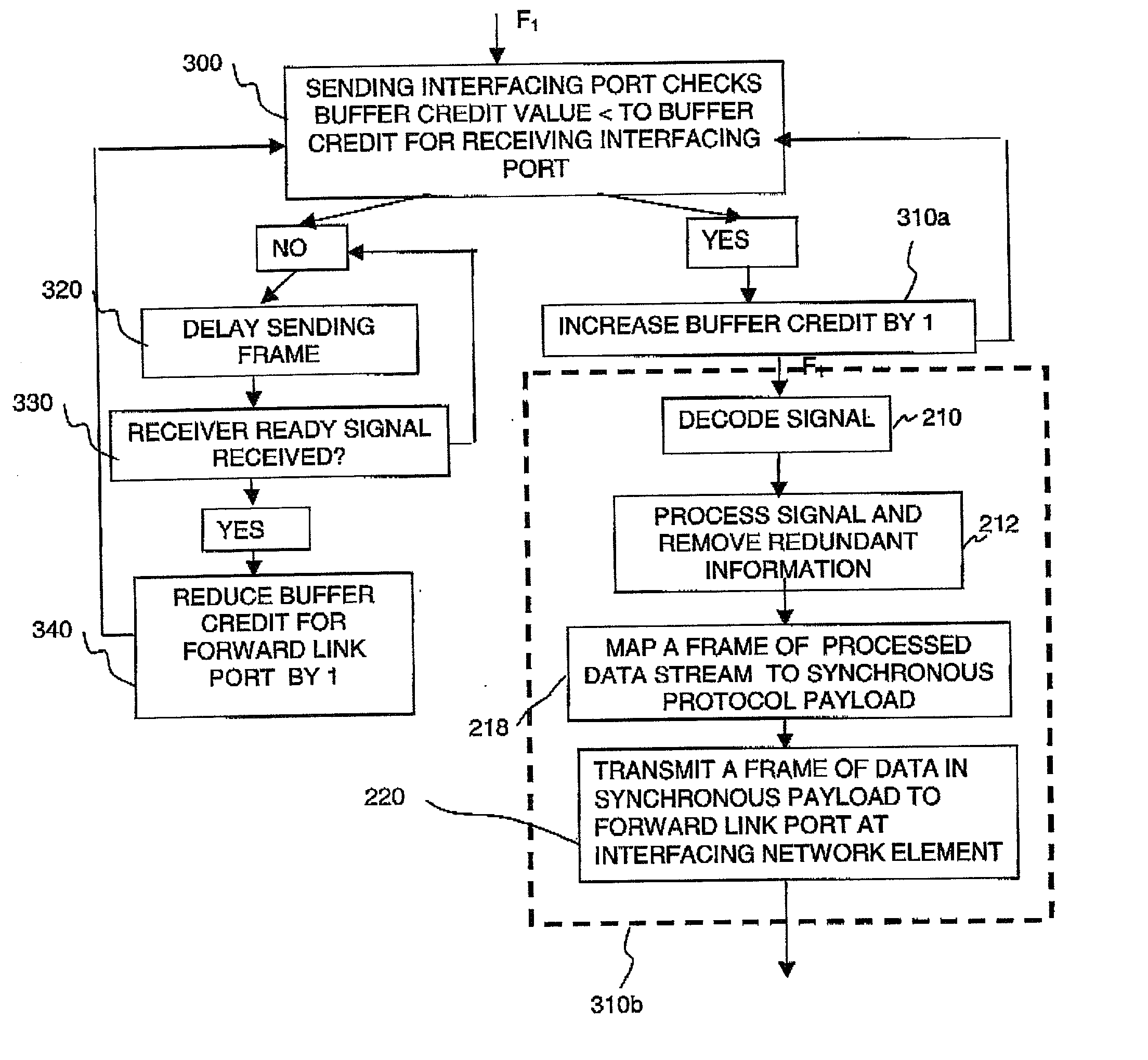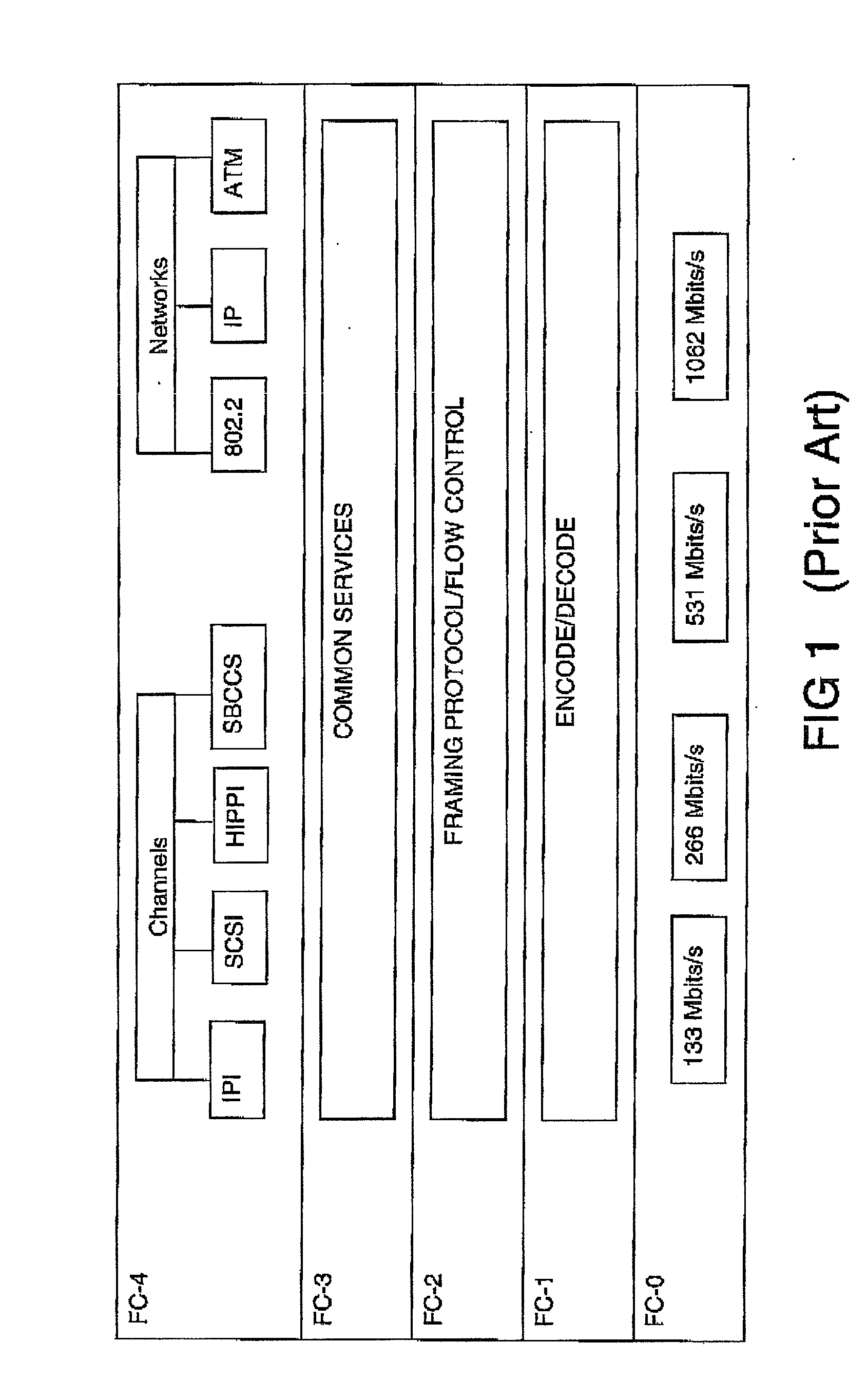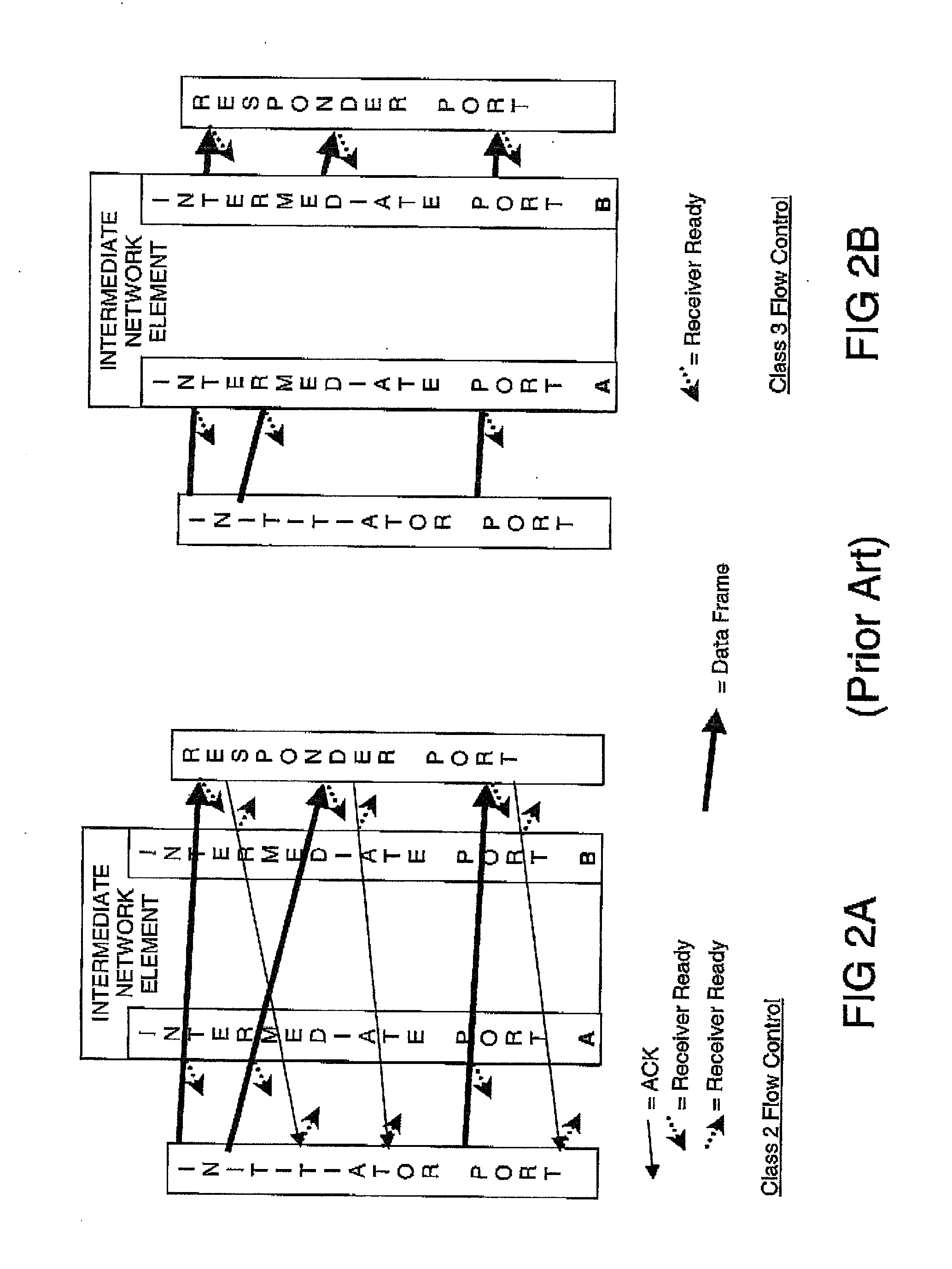Bandwidth allocation in a synchronous transmission network for packet oriented signals
a synchronous transmission network and packet oriented technology, applied in the field of packet oriented signal bandwidth allocation in the synchronous transmission network, can solve the problems of inefficient use of synchronous network bandwidth, inability to fit neatly into any synchronous network payload container, and inability to communicate between connected nodes in time, so as to achieve the effect of obviating and/or mitigating
- Summary
- Abstract
- Description
- Claims
- Application Information
AI Technical Summary
Benefits of technology
Problems solved by technology
Method used
Image
Examples
Embodiment Construction
[0115] Overview of Fibre Channel
[0116] A detailed overview of Fibre Channel is now given with reference to the accompanying drawings to illustrate a conventional buffer-to-buffer flow control mechanism which Fibre Channel and other upper layer protocols supported by Fibre Channel employ.
[0117] Firstly, Fibre Channel is a serial link supporting its own protocol as well as upper layer protocols such as FICON, FDDI, SCSI, HIPPI, IPI, IP.etc.
[0118] Protocols traditionally thought of as either channel or network may co-exist on a single Fibre channel physical layer. The lower Fibre channel transport layers are not aware of any "ULP" (Upper Layer Protocol) as is known to those skilled in the art.
[0119] Conventionally, Fibre Channel enables large amounts of information to be transferred rapidly. Transmission speeds include 133 Mbits / s, 266 Mbit / s, 530 Mbit / s, 1.0625 and 2.1250 Gbit / s (higher transmission speeds may be provided in future based on Fibre Channel principles). Fibre Channel is ...
PUM
 Login to View More
Login to View More Abstract
Description
Claims
Application Information
 Login to View More
Login to View More - R&D
- Intellectual Property
- Life Sciences
- Materials
- Tech Scout
- Unparalleled Data Quality
- Higher Quality Content
- 60% Fewer Hallucinations
Browse by: Latest US Patents, China's latest patents, Technical Efficacy Thesaurus, Application Domain, Technology Topic, Popular Technical Reports.
© 2025 PatSnap. All rights reserved.Legal|Privacy policy|Modern Slavery Act Transparency Statement|Sitemap|About US| Contact US: help@patsnap.com



